4.3 Specialtiesの最近のブログ記事
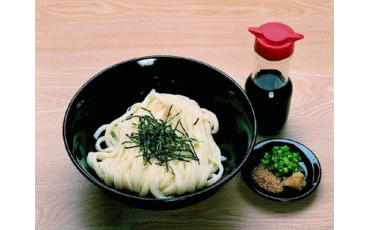
Udon noodles from Kagawa are so famous that one always thinks of Sanuki (the ancient name of Kagawa) when they hear the word “udon.” Made from superior quality wheat and salt, the quantity of which varies depending on the season, this thick and tasty noodle is a must for every visitor. Somen noodles are another well-known kind of noodle produced in Kagawa. Also made from a superior quality wheat, this noodle is kneaded by hand and then stretched out into extremely thin threads and dried in the sun.
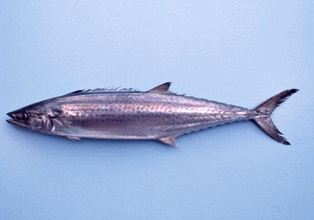
In spring, there is japanese spanish mackerel (sawara), in summer, butterfish (managatsuo), in autumn, black sea bream (chinu, kurodai) and in winter, young yellow tail (hamachi, buri). A great variety of seasonal seafood is caught throughout the year.

Grilled chicken on the bone, whole legs of chicken fried in spices, is a popular dish in Kagawa. In Marugame, Kagawa, the oldest honetsuki-dori shop opened in 1952, and has opened several branch restaurants since then. Along with these restaurants, many bars (izakaya) and grilled chicken restaurants (yakitori) offer this as an item on their menus. In total over 80 restaurants in Kagawa serve honetsuki-dori. Each restaurant uses different seasonings and grills its chicken differently, so it's fun to try various restaurants' styles.
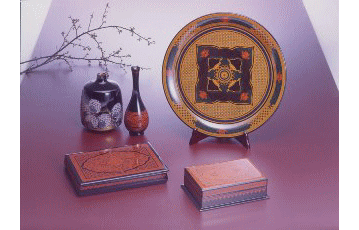
Many traditional arts and crafts came to Kagawa prefecture due to its position as an important gateway for maritime trade. Made with natural materials using traditional methods, these are still well loved parts of peoples’ lifestyles to this day.
In Kagawa, there is a system to recognise traditional craft products which require particularly great skill, or which have a long history. These are called “Kagawan Traditional Crafts”. By February 2006, 37 different product were recognized by the program.
Among these, Kagawa lacquerware and Marugame hand fans are also recognized as National Traditional Crafts.
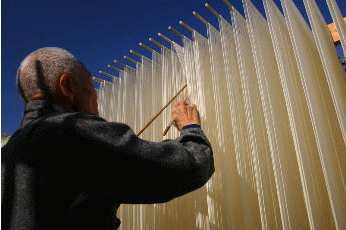
Somen: wheat and cold water are kneaded together, then stretched out into fine, thin noodles and dried in the sun. These are the oldest form of noodles found in Japan, and it is said they have their roots in China. The noodles produced on Shodoshima island, one of the top three somen producing regions in Japan, are well known for their firm texture and distinctive flavor.
Soy Sauce: produced by fermenting boiled soybeans and wheat, soy sauce has been made in Kagawa for over 400 years. Kagawa soy sauce is famous nationally, and traditional production methods are passed down from generation to generation. Soy sauce is an indispensable condiment when eating Sanuki udon noodles.
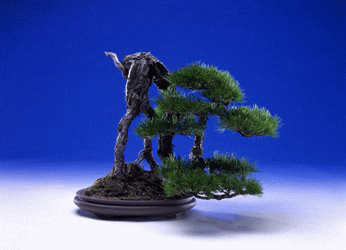
Bonsai: first created in the Edo Period 200 years ago, Kagawa's pine bonsai hold an 80% market share in Japan. Training miniature trees into beautiful shapes for the enjoyment of the observer takes great artistry. Bonsai is popular around the world, and Kagawa's bonsai is exported to the EU, the United States, Korea, Taiwan and many other countries.
Olive products: the climate of the Seto Inland Sea is warm and moderate like the Mediterranean. In 1908, olive saplings were imported from the United States and planted in three places in Japan. Of those three, the only place where the olive trees took root was Shodoshima, in the Inland Sea, and so this became the first place to produce olives in Japan. Green olives harvested in autumn are preserved in salt and eaten. Black olives, harvested in winter, are made into olive oil, which can be used in cooking, makeup and for medicines.
 Kagawa Prefecture, Japan
Kagawa Prefecture, Japan